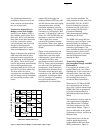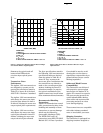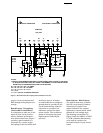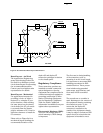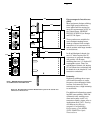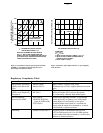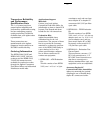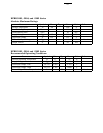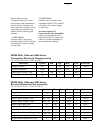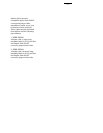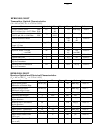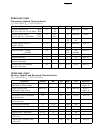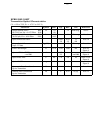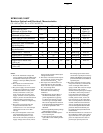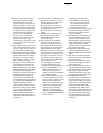
16
HFBR-5204/-5204T
Receiver Optical and Electrical Characteristics
(T
A
= 0°C to 70°C, V
CC
= 4.75 V to 5.25 V)
Parameter Symbol Min. Typ. Max. Unit Reference
Input Optical Power P
IN Min.
(W) -29 dBm avg. Note 16
Minimum at Window Edge Figure 10
Input Optical Power P
IN Min.
(C) -30 dBm avg. Note 17
Minimum at Eye Center Figure 10
Input Optical Power Maximum P
IN Max.
-14 dBm avg. Note 16
Systematic Jitter Contributed SJ 0.2 1.2 ns p-p Note 18
by the Receiver
Random Jitter Contributed RJ 1 1.91 ns p-p Note 19
by the Receiver
Operating Wavelength λ 1270 1380 nm
Signal Detect - Asserted P
A
P
D
+ 1.5 dB -31 dBm avg. Note 20
Signal Detect - Deasserted P
D
-45 dBm avg. Note 21
Signal Detect - Hysteresis P
A
- P
D
1.5 dB
Signal Detect Assert Time 0 55 100 µs Note 22
(off to on)
Signal Detect Deassert Time 0 110 350 µs Note 23
(on to off)
HFBR-5204/-5204T
Transmitter Optical Characteristics
(T
A
= 0°C to 70°C, V
CC
= 4.75 V to 5.25 V)
Parameter Symbol Min. Typ. Max. Unit Reference
Output Optical Power BOL P
O
-21 -14 dBm avg. Note 8
62.5/125 µm, NA = 0.275 Fiber EOL -22
Output Optical Power BOL P
O
-24.5 -14 dBm avg. Note 8
50/125 µm, NA = 0.20 Fiber EOL -25.5
Optical Extinction Ratio 0.03 % Note 10
-35 dB
Output Optical Power at P
O
(“0”) -45 dBm avg. Note 11
Logic “0” State
Center Wavelength λ
C
1270 1310 1380 nm
Spectral Width - FWHM ∆λ 250 nm Note 12
- nm RMS 107 nm RMS
Optical Rise Time t
r
4 ns Note 13
Optical Fall Time t
f
4 ns Note 13
Systematic Jitter Contributed SJ 0.04 1.2 ns p-p Note 14
by the Transmitter
Random Jitter Contributed RJ 0 0.52 ns p-p Note 15
by the Transmitter



